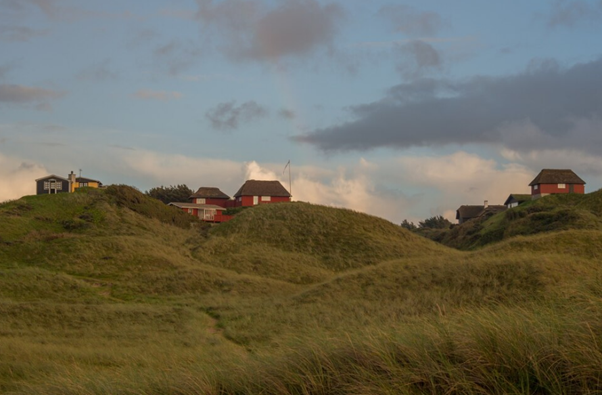Inspiration for Designing Country and Rural Houses
Designing a country or rural house is an opportunity to blend architectural innovation with the timeless charm of nature. The allure of rural living lies in its tranquility, natural beauty, and slower pace, providing a stark contrast to the hustle and bustle of urban environments. As such, designing a home in this setting requires a thoughtful approach to integrate the natural surroundings, lifestyle needs, and aesthetic preferences.
Embracing the Natural Environment
One of the key inspirations for designing country and rural houses is the natural environment. The landscape, vegetation, and local climate play a crucial role in shaping the design and functionality of the home. For instance, positioning the house to take advantage of natural light can create warm, inviting spaces while reducing energy consumption. Large windows and open floor plans can offer expansive views of the countryside, making the most of the scenic surroundings.
Moreover, the use of natural materials such as wood, stone, and brick can help the house blend seamlessly into its environment. These materials not only add aesthetic value but also offer durability and sustainability. Reclaimed wood, in particular, adds a rustic charm and unique character to the home, reflecting the history and heritage of the area.
Architectural Styles and Elements
Country and rural houses come in a variety of architectural styles, each with its unique features and charm. Traditional farmhouse designs often feature gabled roofs, wide porches, and simple, functional layouts. The farmhouse style emphasizes practicality and comfort, with large kitchens, spacious living areas, and cozy fireplaces.
Another popular style is the cottage or cabin design, characterized by its smaller size, steeply pitched roofs, and use of natural materials. These homes exude a cozy, intimate feel, perfect for a retreat or vacation home. Rustic elements such as exposed beams, stone fireplaces, and wooden interiors enhance the charm and warmth of the space.
Modern interpretations of rural homes often incorporate contemporary design elements while maintaining a connection to nature. Clean lines, open spaces, and minimalist aesthetics define these homes. The integration of glass, steel, and concrete with natural materials creates a harmonious balance between modernity and rustic charm.
Sustainable and Eco-Friendly Design
Sustainability is a growing concern in architectural design, and country houses offer ample opportunities to incorporate eco-friendly features. Utilizing passive solar design, for example, can optimize natural heating and cooling, reducing the need for artificial climate control. Green roofs and walls can enhance insulation, improve air quality, and promote biodiversity.
Rainwater harvesting systems and greywater recycling can make rural homes more self-sufficient and reduce the environmental impact. Solar panels and wind turbines can provide renewable energy sources, further decreasing reliance on non-renewable resources. By integrating these sustainable practices, rural houses can achieve a high level of energy efficiency and environmental responsibility.
Floor Plan Creator
Creating an effective floor plan is essential in the design process of a country or rural house. A well-thought-out floor plan maximizes space, enhances functionality, and ensures that the home meets the lifestyle needs of its occupants. A floor plan creator is a valuable tool in this regard, allowing architects and homeowners to visualize and experiment with different layouts before finalizing the design.
Using a floor plan creator, one can easily adjust room sizes, add or remove walls, and arrange furniture to find the optimal configuration. This tool also helps in planning the flow of the house, ensuring that spaces are connected logically and efficiently. For instance, placing the kitchen near the dining and living areas facilitates easy movement and communication during meal preparation and family gatherings.
Additionally, a floor plan creator allows for the incorporation of special features such as mudrooms, home offices, or hobby rooms, which are particularly valuable in rural settings. Mudrooms, for example, provide a practical space to store outdoor gear and prevent dirt from being tracked into the house. Home offices or studios can offer a quiet, dedicated space for work or creative pursuits, taking advantage of the serene rural environment.
Blending Indoor and Outdoor Living
One of the most appealing aspects of country living is the opportunity to enjoy the outdoors. Therefore, designing a rural house should include features that facilitate a seamless transition between indoor and outdoor spaces. Wrap-around porches, patios, and decks extend the living area and provide perfect spots for relaxation, entertaining, and enjoying the natural surroundings.
Incorporating large sliding doors or bi-fold windows can create an open, airy feel and allow for unobstructed views of the landscape. These elements not only enhance the aesthetic appeal of the home but also improve ventilation and natural lighting. Outdoor kitchens, fire pits, and garden spaces further enrich the rural living experience, making it easy to spend time outside and connect with nature.
Personalized Touches and Customization
Every rural home should reflect the personal tastes and preferences of its owners. Customization is a key aspect of designing a country house, ensuring that the home is not only beautiful but also tailored to the specific needs and desires of its inhabitants. This can include bespoke furniture, unique architectural details, and personalized decor.
Handcrafted elements such as custom cabinetry, built-in bookshelves, and artisan-made fixtures add character and individuality to the home. Personal touches in the form of family heirlooms, antiques, or artwork create a sense of history and continuity, making the house feel truly special and unique.
Conclusion
Designing a country or rural house is a rewarding endeavor that combines aesthetic beauty with practical functionality. By drawing inspiration from the natural environment, selecting appropriate architectural styles, and incorporating sustainable practices, one can create a home that is both timeless and contemporary. Tools like floor plan creators enable detailed planning and customization, ensuring that the final design meets all the needs and desires of the homeowners. Blending indoor and outdoor living spaces and adding personalized touches further enhance the charm and appeal of rural living. Ultimately, a well-designed rural house offers a peaceful, nurturing sanctuary that harmonizes with its surroundings and enriches the lives of its occupants.



